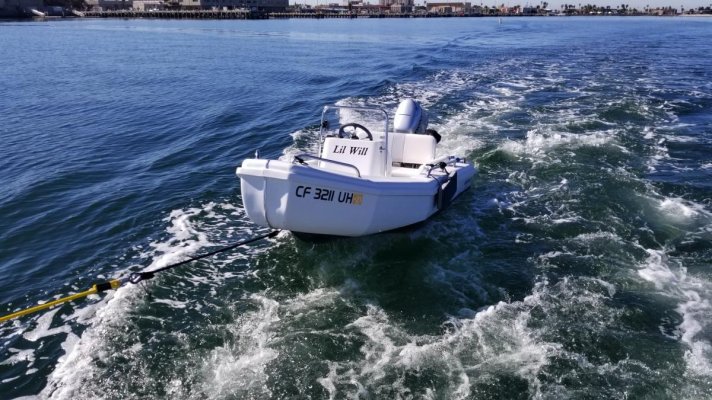Fletcher500
Guru
We just hit the 1 year mark on a new, 11.5 BullFrog, Aluminum hull Dink, with a 30HP Honda.
The waters in San Diego are warm in the Summer and generally active in regards to critters that attach themselves including coral worms. I clean the hull myself, and in order to keep it clean I now have some bare spots on the exterior AL hull. An ablative paint was originally used, which is one of the causes of the bare metal.
The hull did not have any sacrificial anodes on it, so I hung an 8 in. long Zinc off the transom directly coupled to the Aluminum frame. Did it work? I think so.
I am going to bring it to the yard in Q1, 2020 for the following SOW:
Questions for those who have had experience with Aluminum hulls, and/or are familiar with the chemistry involved in salt water:
Edit - I titled the string RIB, but is a hard shell, PUF filled.
Thanks in advance, Fletch.
The waters in San Diego are warm in the Summer and generally active in regards to critters that attach themselves including coral worms. I clean the hull myself, and in order to keep it clean I now have some bare spots on the exterior AL hull. An ablative paint was originally used, which is one of the causes of the bare metal.
The hull did not have any sacrificial anodes on it, so I hung an 8 in. long Zinc off the transom directly coupled to the Aluminum frame. Did it work? I think so.
I am going to bring it to the yard in Q1, 2020 for the following SOW:
- Remove ablative, and apply a non copper based, hard paint.
- Have them drill in to the transom, and install 2 Zincs for cathodic protection. I can then get rid of the hanging zinc and replace the transom mounted ones as needed.
Questions for those who have had experience with Aluminum hulls, and/or are familiar with the chemistry involved in salt water:
- Is there a particular brand/type of paint you would recommend?
- Thoughts on my proposed Zincs to protect against galvanic corrosion? Would you do anything different?
- This is my first boat with an Al hull, so any other advice is welcome.
Edit - I titled the string RIB, but is a hard shell, PUF filled.
Thanks in advance, Fletch.
Attachments
Last edited:

